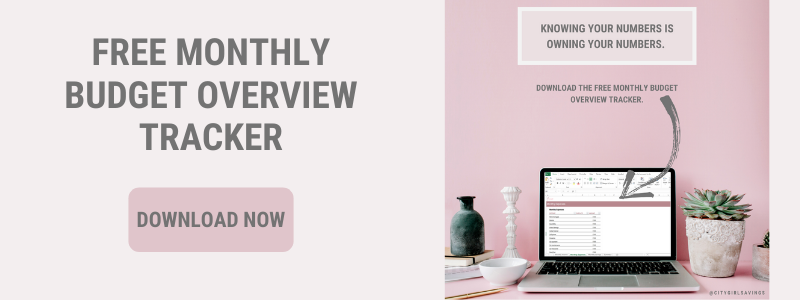I want you to stop for just a second and imagine how good it would feel to have one month of reserves sitting in a savings account. You just paid your rent and utilities for the month, and you have an additional month’s worth of rent and utilities in your savings account. You have to admit that it would feel great to have that, and would take some of the pressure off of living paycheck to paycheck, or at least month to month.
The thing is, it’s not as hard as it may sound to save up one month’s worth of bills. There is a certain strategy behind saving that amount, especially if you seem to live paycheck to paycheck. I’m going to walk you through the 5 steps to build up one month of reserves in your savings account, so you can focus on other financial goals.
The Paycheck to Paycheck Lifestyle
Before I dive into the best way to build up one month of reserves, I want to touch on the dreaded paycheck to paycheck lifestyle. In case you aren’t aware, the paycheck to paycheck lifestyle is just that. It means you are spending everything in one paycheck and counting down the hours until the next paycheck. You are never able to get ahead because you have just enough in your paycheck to get you by.
Living paycheck to paycheck can certainly be a vicious cycle. It can also feel like there isn’t a way out. Take it a step further and think of what would happen if things did not go according to plan.
You have just enough money to cover your bills, but not enough for some unexpected expense to pop up. This can take you from “getting by” to being behind. Being behind likely means you’ll need to use credit cards or tap into whatever savings you may have.
5 Steps to Build Up One Month of Reserves
Instead of staying in a place of financial uncertainty by living paycheck to paycheck, it’s time to break free. Having one month of reserves on hand can give you room to breathe and take care of other financial priorities. Let’s dive into how to build up one month of reserves.
Step 1 – Define your reserves
Before you can start building a savings equivalent to one month’s worth of reserves, you’ll need to define what a reserve is. Things like rent, utilities, personal bills, minimum debt payments and a car payment should all be factored into your reserve list. Essentially, any bill you would need to pay for each month, like clockwork, should be considered a reserve.
Unless you want to, you don’t need to factor in things like gas, groceries, and other discretionary or variable spending into your reserve list. These are things that you do need, but can work around in terms of price and frequency. You want your reserve list to be bills expenses that must be paid every month and likely with a certain amount.
Step 2 – Determine what one month of reserves adds up to
Once you have defined your reserves, it’s time to add them up. Go through each item on your reserve list and put the monthly cost of that item. Once all items have an appropriate price for the month, add up all of the prices. Whatever this number adds up to is the number you need to have in your savings account to have one month’s worth of bills and expenses that make up your reserves.
Step 3 – Identify how much you can cut back to save towards your reserves
Now, we’re getting somewhere! You know what bill or expense constitutes a reserve, and what all of your reserves add up to for a monthly total. Now, it’s time to strategize how you can get there. The first and best place to start is by reviewing your budget.
Is there any area or category that can be cut back or cut out to help you build your savings? Spending $25 less a month on groceries, $15 less a month on gas, and $10 less a month on going out to eat adds up to $50 that can be saved. $50 may not seem like a game changer in regards to your reserves, but it will add up.
Step 4 – Make up your reserve amount faster by bringing in extra money
Sometimes, there isn’t much room in your budget to cut back. All that means is that you need to bring in more money to get to your reserve amount. Can you work overtime or extra hours at your job? Can you take a part-time job at night? Maybe you can sell things on Poshmark? There are plenty of ways you can give your income a boost.
Make sure that whatever you do to bring in more money or cut back to save more, you actually put those extras in a savings account dedicated to your one month’s worth of bills. You can always find a purpose for the money, but you’ve already decided its purpose is for building up your reserve account! Stay strong and don’t use the money until you’ve reached your goal.
Step 5 – Don’t wait until you have your full reserve amount to save it
You may have gathered this from my comment above, but once you start saving for your reserves, put that money into a separate account instantly. You don’t have to wait until you have the full amount of reserves before putting it into its own account. You should start separating that money the moment you have something saved.
This will make it easier for you to avoid spending it on other things. Separating it along the way will also give you motivation to keep going. As you see your reserve savings account growing each month, you will want to keep building it up. Larger account balances serve as great motivation to stay focused!
What Happens After You Have One Month of Reserves?
Slow and steady wins the race! You may not get your one month of reserves saved up right away, but keep at it. Consistency is so powerful in reaching any type of goal, even financial ones. If you keep at it, you will have one month of reserves in your savings account.
Once you get there, you’ll probably wonder “what’s next?” Fair question! Once you have your reserves built up, you can focus on the next financial goal.
Things like paying down debt (especially high interest debt), saving for emergencies, or saving for your next big purchase are priorities for everyone. Shift your money saving (and money growing) efforts to your next goal! Don’t be tempted to go back to your old spending ways. You’re on a new level now!
Map out your financial priorities, create a budget to reach them, and get on financial track today! Request a call with me to learn more!
Related: How to Get One Month Ahead on Bills
Follow the 5 steps above and you will build up one month of reserves in no time! Remember, you must stay consistent, and you must get creative with how you save and make more money. You can do this. Anyone can do this!
Do you already have one month of reserves saved? What steps did you take to get there? Share your questions and experiences by posting a comment below!
-Raya
The CGS Team







1 thought on “5 Steps to Build Up One Month of Reserves”
Hey ladies! @Katecohen08 @ellicellis @jerricalaurie @kelseyrenae88 @lawrencer @ksecret @bdossm1 @aliyah1119 Building up one month’s worth of reserves isn’t easy, but the peace of mind is worth it!